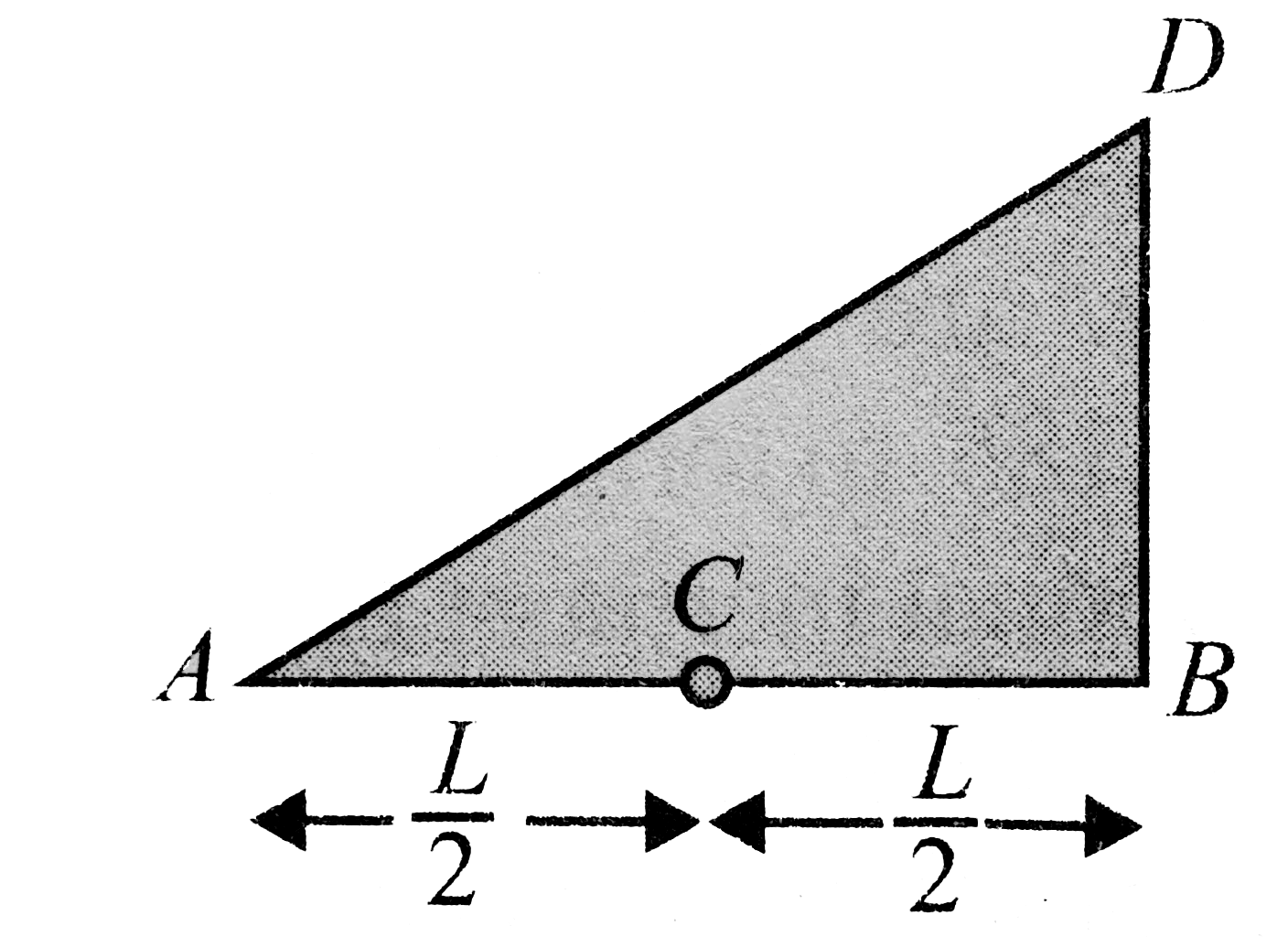An object of mass 0.2 kg executes simple harmonic oscillation along the x-axis with a frequency 25π. At the position x = 0.04m, the object has kinetic energy 0.5J and potential energy 0.4J. amplitude of oscillation is (potential energy is zero mean position).
6 cm
4 cm
8 cm
2 cm
The correct Answer is:A
k=12mω2(A2−x2)=0.5, U=(1)(2)mω2x2=0.4J
⇒ 12mω2A2=0.9 ⇒ 12×0.2×502A2=0.9(ω=2πf) ⇒ A=350m=6cm
Topper's Solved these Questions
- SIMPLE HARMONIC MOTION Book:VMC MODULES ENGLISHChapter:SIMPLE HARMONIC MOTION Exercise:LEVEL (2)
Explore 40 Videos
- SIMPLE HARMONIC MOTION Book:VMC MODULES ENGLISHChapter:SIMPLE HARMONIC MOTION Exercise:6-previous year question
Explore 56 Videos
- SIMPLE HARMONIC MOTION Book:VMC MODULES ENGLISHChapter:SIMPLE HARMONIC MOTION Exercise:LEVEL 0 LONG ANSWER TYPE
Explore 2 Videos
- ROTATIONAL MOTION Book:VMC MODULES ENGLISHChapter:ROTATIONAL MOTION Exercise:JEE Advanced (Archive) (True/False Type)
Explore 3 Videos
- SYSTEM OF A PARTICLES & ROTATIONAL MOTIONBook:VMC MODULES ENGLISHChapter:SYSTEM OF A PARTICLES & ROTATIONAL MOTIONExercise:IN-CHAPTER EXERCISE F
Explore 10 Videos
Similar Questions
A particle stars SHM at time t=0. Its amplitude is A and angular frequency is ω. At time t=0 its kinetic energy is E4. Assuming potential energy to be zero and the particle can be written as (E=total mechanical energy of oscillation).
View SolutionIf a spring has time period T, and is cut into (n) equal parts, then the time period of each part will be.
View SolutionThe phase difference between displacement and acceleration of particle in a simple harmonic motion is
View SolutionA triangular platge of uniform thickness and densilty ismade to rotate about an axis perpendicular to the plane of the paper an a. passing through A b. passing through B, by the application of some foce F at C (mid point of AB) as show in figure. In which case is angular acceleration more?

View SolutionA ball of radius 11 cm and mass 8 kg rolls from rest down a ramp of length 2m. The ramp is inclined at 35° to the horizontal. When the ball reaches the bottom, its velocity is (sin 35° = 0.57)?
View SolutionAn object of mass 0.2 kg executes simple harmonic oscillation along the x - axis with a frequency of (25//pi) Hz . At the position x = 0.04 , the object has Kinetic energy of 0.5 J and potential energy 0.4 J. The amplitude of oscillations is……m.
View SolutionAn object of mass 0.2 kg execurtes Simple harmonic along X-axis with frequncey of (25)/(pi)Hz. At the position x=0.04 m, the object has kinetic energy of oscillation in meter is equal to
View SolutionAn object of mass 0.2 kg executes simple harmonic oscillation along the x-axis with a frequency (25)/pi . At the position x = 0.04m, the object has kinetic amplitude of osciallation is (potential energy is zero mean position).
View SolutionAn object of mass 0.2 kg exectes simple harmonic oscillations alongs x- axis with a freqency of (25//pi) Hz . At the positions x = 0.04m , the object has kinetic energy of 0.5 J and potential energy 0.4 J . Find the amplitude of oscillaties
View SolutionAn object of mass 1kg executes simple harmonic oscillations along the x-axis, with a frequency of 2πHz. At the position x = 1 m, the object has a kinetic energy of 24 J. The amplitude of the oscillation is
View SolutionAn object of mass 1 kg executes simple harmonic oscillations along the x - axis with a frequency of 2πHz. At the position x = 1 m, the object has a kinetic energy of 24 J and potential energy is 8J. The amplitude of the oscillation is
View SolutionThe mass of an object with simple oscillations along the x-axis is 0.2kg and frequency 25/pi Hz . What is the amplitude of vibration if the motion of the object is 0.5 J at position x = 0.04m?
View Solutionएक 0.2kg की वस्तु X -अक्ष के अनुदिश आवर्ती 25πHz से सरल आवृत्त गति कर रही है। स्थिति x=0.04m पर वस्तु की गतिज ऊर्जा 0.5J एवं स्थितिज ऊर्जा 0.4J है। दोलनों के आयाम का परिमाण मीटर में है।
View SolutionAn object of mass 0.20kg executes simple harmonic oscillations along X-axis with a frequency of (25/π) Hz. At the position x=0,04 the object has kinetic energy of 0.5J and potential energy 0.4J. The amplitude of oscillations is:
View SolutionThe frequency of oscillation is (10/pi) (in Hz) of a particle of mass 0.1kg which executes SHM along X-axis. The kinetic energy is 0.3J and potential energy is 0.2J at position x=0.02m. The potential energy is zero at mean position. Find the amplitude of oscillations (in metre):
View SolutionA particle executes SHM along X-axis with a frequency (25π)Hz. The mass of the particle is 0.20kg. At the position x=0,04m, the kinetic energy is 0.50J and the potential energy is 0.4J. The potential energy is zero at mean position. Find the amplitude of oscillations (in cm).
View Solution
